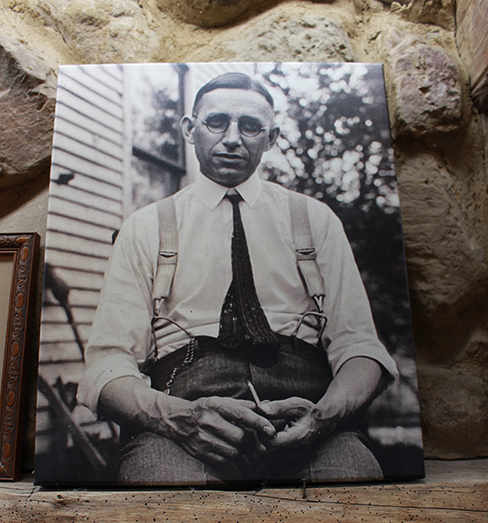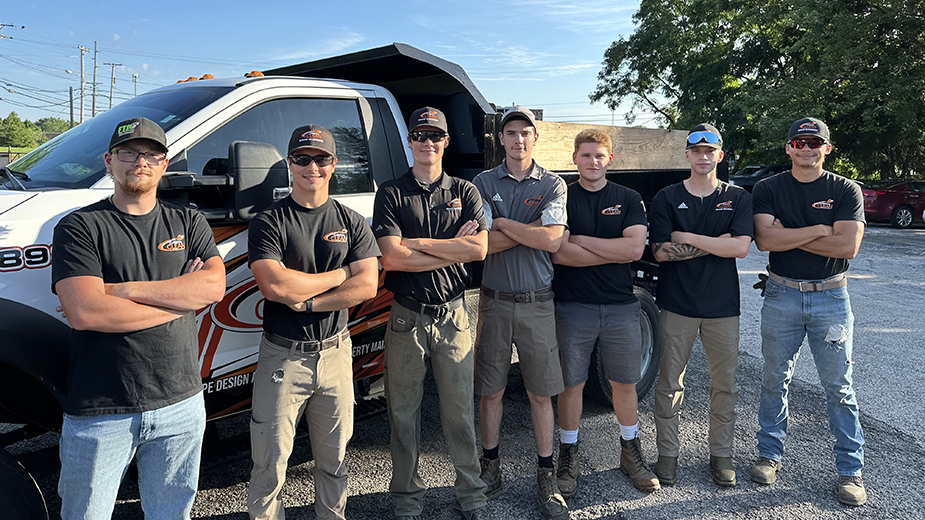Roots Run Deep at White House Fruit Farm
CANFIELD, Ohio – The owners of White House Fruit Farm, the Hull family, are as deeply rooted in their 200-acre farm in Canfield as the crops they grow there.
“What you have to understand is this is Baird country out here. A lot of the names that you see in this area have been here for about 200 years,” says Debbie Pifer, a member of the Hull family.
Debbie is a ninth-generation owner of the farm, which dates to the early 1800s.
“We have an Ohio river survey map that shows the Bairds here in 1805. And we have a deed to the sale of this section dated Jan. 20, 1809,” says Scott Hull, a member of the 10th generation.
The bill-of-sale records the purchase of the land by Hull’s ancestor Heinrich Baird.
Atop the bill is the signature of Thomas Jefferson, who was president of the United States at the time.
Pifer says the family’s original last name was Bart. It was later changed to Beard and finally Baird. The Baird family that owns nearby Baird Brothers Fine Hardwoods are distant relatives.
The Baird family farm became the Hull family farm in 1924 when Jerome Hull purchased it from his uncle, Ensign Baird.
Jerome, who was also the first superintendant of Mahoning County Schools, decided to go into the apple business.
“It was Hull’s Fruit and Turkey Farm because we raised turkeys for 30 years,” Pifer says.
David Hull, Jerome’s son and Debbie’s father, says they were one of about five turkey growers in the area at the time. Hull has been working at the farm full-time since he graduated from high school.

The Hull farm grew apples, peaches and pears and raised 5,000 turkeys at a time. Of Jerome’s nine children, only David stayed at the farm.
“When we got to the early ’60s, the question was how to pass on the farm from generation to generation and how to do it financially because no one could afford to buy out. So, we incorporated,” Pifer says.
In 1968, Jerome decided he wanted a “more professional name” for the farm, Pifer says, changing it to White House Fruit Farm. The white house of the name is still located on the grounds, just behind the store.
If you were to fly over the farm, you could see the Hull name still visibly painted on the original section of the store.
For much of the farm’s history, the business model focused on wholesale.
“We always had some sort of retail but it was a temporary set-up, under a tree or in a small building,” Pifer says.
But that all began to change in the 1980s. Debbie’s brother, Dave Hull, was one of the last delivery drivers, delivering apples to grocery stores in the Youngstown area.
The apples were delivered in cardboard boxes and three-pound polythene bags. One day while Hull was delivering apples, a produce manager came to him and said, “ ‘We still want your cardboard box but we’re no longer going to be buying the three-pound poly bag.’ ”
Hull said, “Is there a problem?”
The manager told him that if he bought a certain amount of apples from Washington state, he would have a chance to win a trip to Hawaii.
“I came back and I told [David] that and right away it was crystal clear that a little apple grower in Ohio had no marketing muscle compared to the West. So, our focus needed to be on retail because we could not compete in the wholesale world,” he says.
The Hulls set about expanding and improving their retail store, which David built inside the farm bank barn in 1978. It was the farm’s first permanent retail location.
“That, I think, opened up our retail in a great way,” says Kim Sisco, Debbie’s cousin and member of the ninth generation.
The Hulls began adding new items, such as deli products and doughnuts, and the business began to grow. By the 1990s, White House Fruit Farm was 100% retail.
The transition was difficult but essential to the survival of the farm, Pifer says.
“Now, instead of just being a fruit grower, you’re a marketer, a buyer, a weather person and a maintenance person,” she says.
As the Hulls made the transition to retail, they also began developing the grounds around the store to make them more inviting to visitors.
They built the two ponds in the 1980s and planted most of the trees you see today in the 1990s.
Tim Hull, another cousin, does all of the landscaping.
“That wasn’t a pond. That was somebody’s vision,” he says, gesturing to the pond where children come to feed the fish.
“This whole area has been developed because of the visions of the people before me,” he says.
Today, eight members of the Hull family work at White House Fruit Farm, which has become a retail destination.

The planting season at the farm runs from April to the end of October, beginning with asparagus, then strawberries, blueberries and vegetables, followed by peaches, plums and apples, and ending the season with pumpkins and squash.
The produce represents about 25% of the farm’s business, Pifer says. Making up the other 75% are the bakery, deli and specialty items departments.
Depending on the season, White House employs anywhere from 45 to over a hundred.
The Hulls added onto the store in 1987, followed by two more additions in 1993 and 2003. The gift barn, which Sisco runs, opened in 2018.
“If you would have told me, even 10 years ago, that we would cater to tourists, I would have told you you were a crazy person,” Pifer says.
White House has become famous for its Fall Harvest Weekends, which feature family friendly activities such as a petting zoo, music and food vendors.
Attending one of the festivals is an annual tradition for many families and Sisco says residents who move away make a visit to the farm a priority whenever they return.
“We are a family and so I think people see that family connection. They see the authenticity and so they return with their families,” she says.
While White House is known for its produce, particularly its apples and the cider made from them, it is perhaps most famous for its blueberry flavored doughnuts.
How that came to be, exactly, is anyone’s guess.
“That’s a really good question and I have never had a good answer,” Pifer says.
White House began making doughnuts in the 1980s. Sisco’s mother, Ruth, was the original doughnut maker.
“We had plain, powdered sugar and an apple cinnamon,” she says.
Today, White House makes 35 varieties of doughnuts daily plus seasonal flavors. While the popularity of flavors depends on the season, the top seller is always blueberry.
“A blueberry doughnut today is not all over the country,” says David. “Wherever you go, people recognize what that is and where it came from. That’s done as much for us as anything.”
Seven women work on the doughnut crew, beginning their days at 3 a.m., mixing the batter, making the icing and filling the fryers.
Judy Anderson, one of the doughnut department managers, has been working at White House for 20 years.
“It’s not rocket science but there is a knack to it. It has to be done a certain way to come out right,” she says.
For instance, there is a particular method one must use when picking the doughnuts up out of the icing.
“We ice hot and you have to twist your wrist to get them up. It takes a couple weeks to get that down,” Anderson says.
If not done correctly the doughnut will have spotty icing or will break entirely.
“You can rip the whole top off the doughnut. Then you have a mess in your icing,” she says.
The bakery tries to make only as many doughnuts as it will need for the day because they are meant to be eaten the day they are baked, Anderson says.
“There’s no preservatives in our doughnuts so we don’t want them to be here the next day.”
A boost to the popularity of the blueberry doughnuts came in 2012, when an order of 12 dozen doughnuts was placed for the New York Giants, who were playing in the Super Bowl.
The Giants sent back photos of some of the players enjoying the doughnuts and the story spread through local media.
“The doughnut thing is not about us. It’s about a group of women who work their tails off and they own their job,” Pifer says. “And why did the Giants win? Because they ate the doughnuts.”
Dave reports business at White House has been growing, a trend he says is likely to continue.
“We’ve added different items and activities over the years to that base business model and it continues to expand,” he says.
The Hulls credit their success to their willingness to work together and “drive in your own lane,” Sisco says.
However, they reserve the lion’s share of the credit for the previous generations and the community’s enduring support.
“We wouldn’t be here at all without the support of this community,” Pifer says. “We provided a product and the place, but our local folks who bring their families built our business.”
Pictured at top: Judy Anderson holds a rack of freshly made blueberry doughnuts at White House Fruit Farm.
Family Business is Sponsored by HD Davis CPAs and White Glove Payroll.
Copyright 2024 The Business Journal, Youngstown, Ohio.



